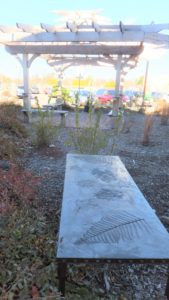We “supersize” nearly everything in America including the food we order, the vehicles we drive and the houses we build. So why not go overboard with our landscapes, parks and green spaces? In many cases, we can no longer afford to build large parks with massive high maintenance lawn areas, lots of manmade features that need upkeep and clutter that produces no benefits. We do need more, not less, green areas nearly everywhere as people, buildings and roads take up more real estate. The way to reach that destination is through interconnected green spaces.
Well designed green spaces that provide people-scale surroundings to immerse people in nature, even for a few minutes, can provide many benefits at relatively low costs. Taking a clue from nature; animals use many different habitats during the course of the day and season. Small green spaces can serve people in the same way, offering the ability to reconnect to nature in their normal daily routine.
Sustainable design in green spaces include:
- Human sized spaces
- Niches for different personalities, time of day and seasons
- “Smart” landscapes that engage people’s intellect and curiosity
- Reduced maintenance and inputs
- An emphasis on growing the landscape instead of building it
- Opportunities to improve the environment
In many urban areas there are small and even, very small parcels of land that have been neglected and could be put to better use. Green spaces, when properly designed, can actually reduce the maintenance that was required for the original vacant space. In addition, neighbors and businesses often help to take ownership in policing them and in maintenance.
Are you ready to help build or maintain a green space in your own community?


